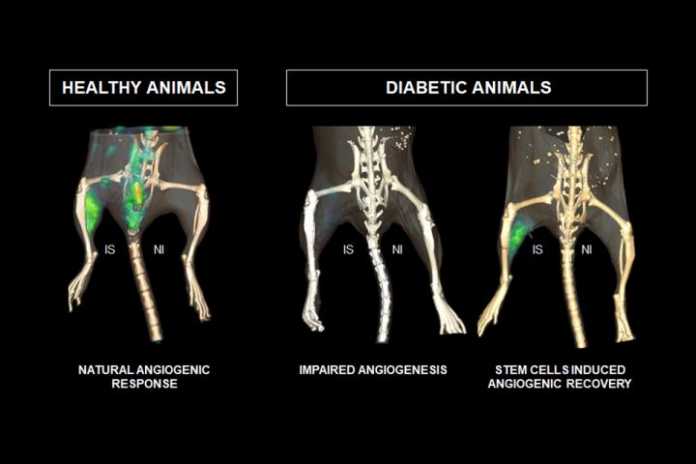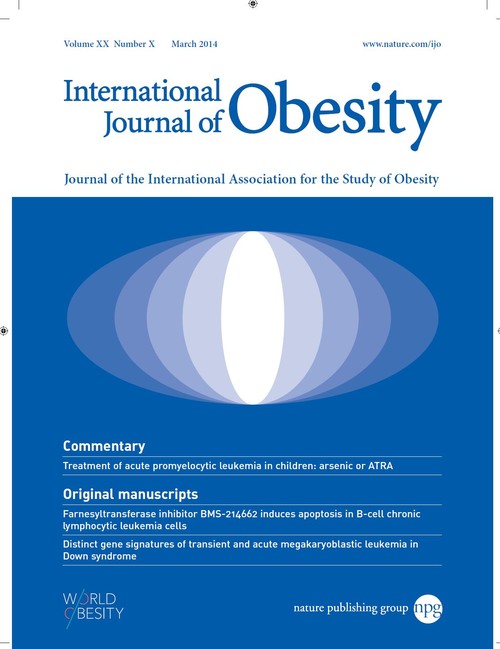Stem cells taken from muscle tissue could promote better blood flow in patients with diabetes who develop peripheral artery disease, a painful complication that can require surgery or lead to amputation.
A new study at the University of Illinois found that an injection of the stem cells prompted new blood vessels to grow, improving circulation in the affected tissues and function in the affected limbs.
The stem cells also induced changes in gene expression in the surrounding tissues, prompting the release of factors to reduce inflammation and increase circulation. The study was published in the journal Theranostics.
“PAD is very common in diabetic patients, but it is difficult to diagnose because patients experience symptoms when the disease is already at an advanced state,” said study leader Wawrzyniec Lawrence Dobrucki, a professor of bioengineering and of medicine and head of the Experimental Molecular Imaging Laboratory at the Beckman Institute for Advanced Science and Technology. “When the PAD is left untreated, it often leads to foot ulcerations and limb amputations – thousands every year in the United States. It’s a serious, costly and debilitating disease.”
In the image shown, positron emission tomography imaging monitors blood vessel formation in mice with ischemic limbs. Diabetic mice injected with mesenchymal stem cells showed angiogenic processes resembling that of nondiabetic animals.
In PAD, arteries in the limbs become narrowed, causing pain and limiting mobility due to lack of blood and oxygen. Treatment options for PAD are few.
Continue Reading Below ↓↓↓
Some medications aim to increase perfusion in the limbs but are not very effective, Dobrucki said. Doctors recommend exercise, but it is painful and difficult for PAD patients, and other cardiovascular complications may make physical activity impractical. Many patients require surgery to place vascular stents or an arterial bypass.
Dobrucki’s group partnered with Marni Boppart, a professor of kinesiology and community health, to study the effects of stem cells injected at the site where the artery narrows. Boppart is an expert in mesenchymal stem cells, which play a role in injury healing and tissue regeneration in muscle and other tissues. Other research has focused on various individual growth factors to promote blood vessel formation – a process called angiogenesis – but none have worked well.
“Angiogenesis is a sophisticated process involving many growth factors and interactions between key proteins,” Dobrucki said. “That’s why we used a more nature-inspired therapy to promote angiogenesis in PAD-affected limbs and used the stem cells. They know what to release, how much and when to stop, for example. They also respond to and modify the tissue microenvironment to optimize their therapeutic effect.”
The researchers surgically narrowed the femoral artery in one leg of diabetic mice. They injected MSCs, taken from the muscles of young mice, into the legs of the experimental mice, while the control group got a saline injection.
Then they used noninvasive imaging techniques, developed in Dobrucki’s lab, to monitor blood flow and blood vessel formation in the mice, comparing both the experimental and control groups and the affected and nonaffected legs in each mouse.
“We clearly demonstrated the capacity for MSCs to increase angiogenesis, peripheral perfusion and muscle function,” Boppart said. “We saw that MSCs promoted muscle healing by creating new vessels in the tissue that compensated for restricted blood flow. MSC transplantation provides the opportunity to maximize vessel growth in PAD to maintain or rejuvenate skeletal muscle.”
The researchers also performed an analysis of gene expression within the tissue and found that, in mice given the stem cell injections, the gene expression in the leg with PAD was close to that of the unaffected leg.
They also found that, compared with the mice that did not get the stem cells, there were genes activated to combat some of the diabetic complications – for example, genes associated with inflammation were repressed.
“Our results suggest that stem cell treatment could be used for those patients at severe stages of PAD who cannot exercise,” Dobrucki said. “Stem cell treatment could help bring them to the level where they can start exercising, or it could save an extremity before it needs amputation.”
Next, the researchers are hoping to identify subpopulations of MSCs that demonstrate the most potential to treat PAD, as well as optimizing the conditions to isolate these rare cells from human fat tissue and skeletal muscle. They are also studying how long the MSCs stay active after injection, and what kind of immune response they may trigger.
Continue Reading Below ↓↓↓
“We also are attempting to develop an acellular approach to rejuvenation of muscle repair and growth,” Boppart said. “We hope to identify the optimal composition of factors that the cells release, as well as the medium for release.
Treatment with the right combination of factors, rather than the cells themselves, provides the opportunity to circumvent the potential for rejection by the immune system.”
The paper “Multimodal assessment of mesenchymal stem cell therapy for diabetic vascular complications” is available online. DOI: 10.7150/thno.19547. Related Journal Article: Multimodal Assessment of Mesenchymal Stem Cell Therapy for Diabetic Vascular Complications
Image: Positron emission tomography imaging monitors blood vessel formation in mice with ischemic limbs. Diabetic mice injected with mesenchymal stem cells showed angiogenic processes resembling that of nondiabetic animals. view more
Source: University of Illinois at Urbana-Champaign
Journal: Theranostics
Funder: NIH
Image Credit: Image courtesy of W. Lawrence Dobrucki












